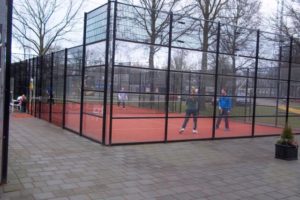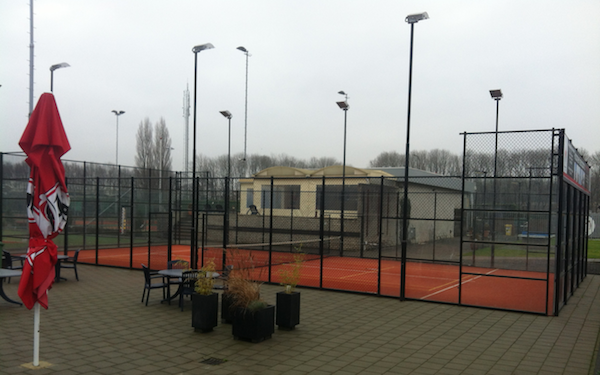The growth of any sport presents multiple challenges. Among others, the lack of financing resources, poor infrastructure, young institutional framework and difficulties attracting relevant journalistic media. But perhaps the biggest challenge is presented when people moving the sport forward does not posses experience and knowledge of the sport. Surely, this can lead to wrong decisions that can have devastating consequences for a promising sport. Such was the case for Padel in The Netherlands back in 2010 whose promising future got threatened by the appearance of a new building material: Plexiglas.
Till 2010 padel fanatics could play padel in only two locations: Mpoint Spijkenisse and TC de Nieuwe Brug in Vijfhuizen. Thou none of the two centers had world class facilities -the playing surface was soft lava- one must admit that the courts were functional. At that point, an influential Dutch construction company called Oranjewoud -today Antea Group- believed in the potential of padel and build courts on the premises of two tennis clubs: TEZ Enschede and TC Maaspoort. Similar was the case of Gemeente Rotterdam, who was planning to build courts in Rotterdam-Zuid. Full of enthusiasm, the board of both clubs and Gemeente Rotterdam committed to the projects. With a mix of own and public funding they agreed to buy the padel courts. What came later was full of bitter surprises and disappointments.
After the construction and grand opening of both centers, the quality of the courts got under scrutiny. Some of the most experienced padel players that tried the recently built courts were astonished by what Oranjewoud would have called “innovation”. The walls were not made of glass or concrete. Instead, they were made of plexiglass, a rather soft, flexible and transparent material.
It started to rain complains at the clubs ranging from the noise that the bounce of the ball on the wall would produce to the bad quality of the bounce. The biggest annoyance to players was the sudden and unpredictable change of speed and direction of the ball after bouncing on the plastic wall. To make things worse, TC Maaspoort took the initiative to organize a National Padel Tournament on the plexiglass courts. Understandably, the back then still young Nederlandse Padelbond decided to take distance from it in an effort to prevent the spread and popularity of plexiglass made padel courts.


Both the board of TEZ Enschede and TC Maaspoort were appealed as it became evident that “Plexiglas” was a failed experiment financed with their own money. Both filed complains at the building company without much success other than having some reinforcements to the structure of the courts. Unfortunately, that did not solve the problems.
Today times are different. Knowledge on padel has grown exponentially. As Oranjewoud went out of business, it would be unthinkable for anyone to buy plexiglass made Padelcourts. Furthermore, in 2017 both TEZ Enschede and TC Maaspoort managed to reform their facilities. The first had the plexiglass panels replaced by glass panels. The second recently inaugurated a new center court that even seems to be suitable for international competitions. And with it, the Dutch community of padel players and entrepreneurs seem to be have learned an important lesson: knowledge is key. And plexiglass is gone forever.














